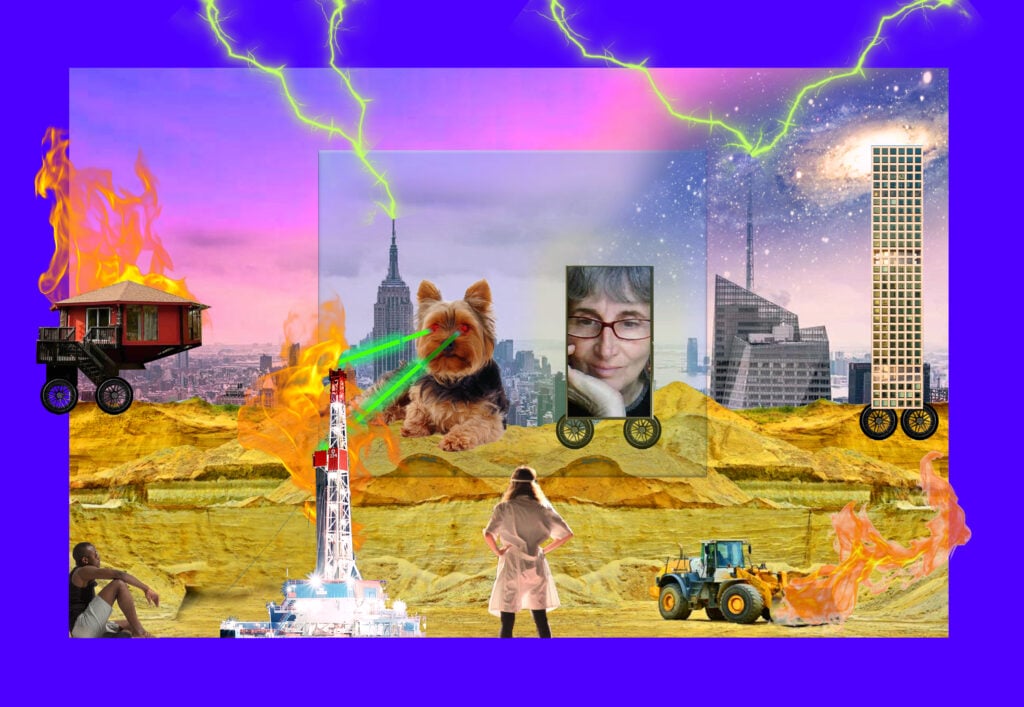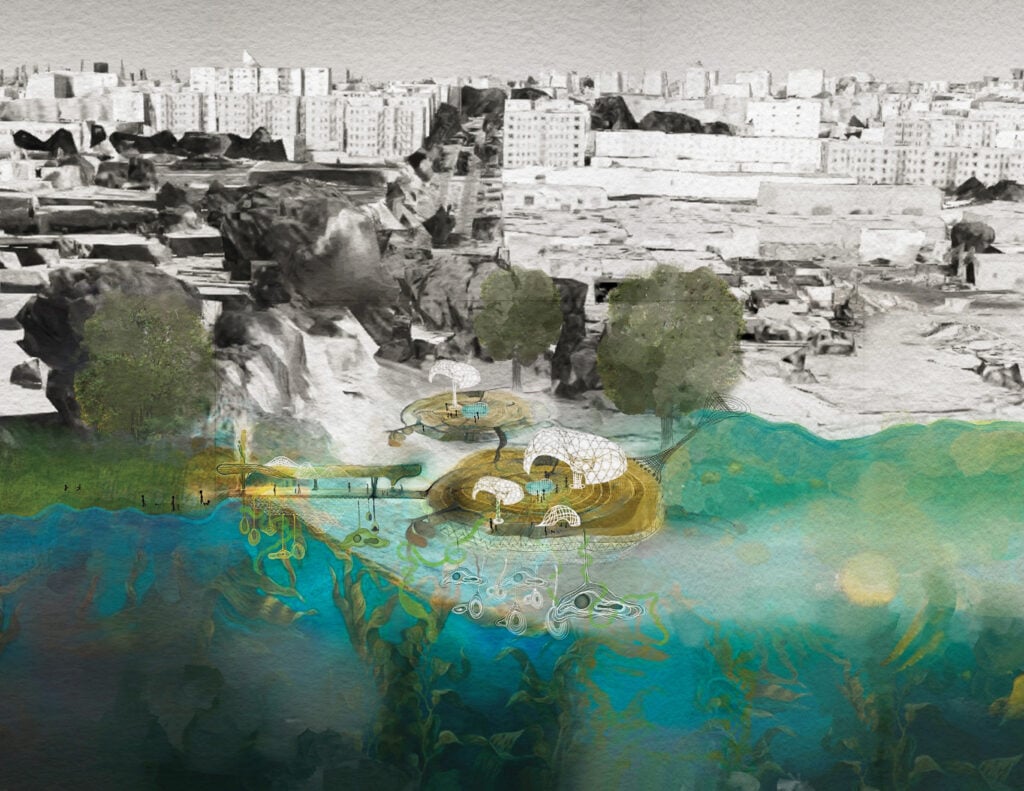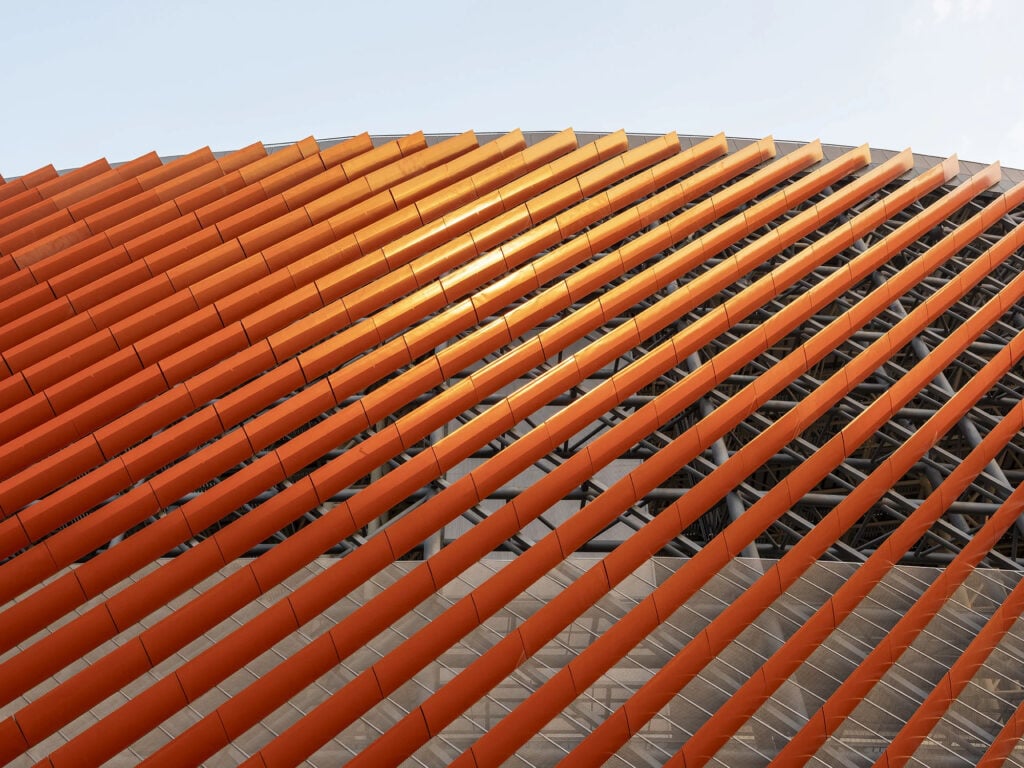
November 10, 2021
Andrés Jaque Discusses His Latest Performance, Being Silica
The life of those who live in New York is the result ot silica extraction, of the way holes in silica grains allow gas from fractured rocks to flow its way up to the surface, through pipes that channel to New York’s boilers and to the ovens that make UltraClear glass.

2012 is also the year when the construction of the Rafael Viñolys’ supertall 432 Park Avenue was initiated. This building is the first pencil tower constructed in what is now called Billionaires’ Row, where the apartments are advertised for their “helicopter views.” They don’t really look at the city or at distant territories. They mostly look at the sky—a sky where nitrogen oxides have been removed. They look onto the effects of atmospheric removal.
These are the interiors where the hegemony of the floor-to-ceiling windows in luxury apartments is set. All these windows have a very particular type of glass: low iron glass, also known as UltraClear glass. The edge of a piece of UltraClear glass is not green, as in ordinary glass, but white. The price of UltraClear glass can be three times the price of standard glass; surprisingly, the 2008 financial crisis tripled the consumption of UltraClear glass in the world. At a time when capital flight landed in unique real estate properties, extreme transparency onto a blue sky was used to stabilize value in time. Now, UltraClear glass is the signature material used in Apple stores, and at the headquarters of Amazon and Google. Contemporary power is encapsulated in UltraClear glass.

UltraClear glass is produced by melting a unique type of white silica that can only be extracted in a few locations around the world. Among these, the most important are the St. Peter Sandstone formations of Ottawa, Illinois. This exact type of silica is the one also used to fill up fracking wells once the drilling process is complete. It is this silica that helps to deliver a big portion of the gas that fuels New York. It is precisely this supply of fracking gas from Susquehanna County that makes the highly energy-dependent production of UltraClear glass possible.
The life of those of us who live in New York is the result of silica extraction, of the way holes in silica grains allow gas from fractured rocks to flow its way up to the surface, through pipes that channel it to New York’s boilers and to the ovens that make UltraClear glass. And yet the silica injected down there, miles deep in the fracking wells, is as invisible to us as the glass it makes. The empty apartment interiors of the pencil towers, the sun that bathes them, the glass in their floor-to-ceiling windows, and the sky they look at are all part of the complex system of extraction that shapes the life of the city, and that, paradoxically, those living in it cannot sense.

Being Silica is the name of the performance I presented last week with the Office for Political Innovation team, and in collaboration with Paula Vilaplana and José Luis Espejo. It took place on the rooftop of the Rockefeller Center as part of the Performa 2021 Biennial. The performance included the testimonies of environmental activists and educators Vera Scroggins and Ray Kemble in conversation with Sioux tribe members Doug CrowGhost and Simone TwoShields, and was followed by a sound reconstruction of drilling a hydraulic fracturing well. This reconstruction was based on the seismographic registry of an entire fracking sequence conducted by the geologist Wojciech Gajek and was carefully transduced as sound by Espejo. This transduction resulted in a violent symphony of low frequency vibrations that allowed the audience to feel in their ears, skin, and lungs the forms and dimensions of the territorial exploitations that New York lifestyles depend on.
Instead of understanding, Being Silica offered the possibility of sensing and attuning to severe realities that are mostly abstract and difficult to imagine. If most art performances happen in the bodies of the performers, this one unfolded in the bodies of the audience. It is in these bodies that the environmental crises that shape our times become manifest; these crises are not just an intellectual concern, but deeply rooted in environmental inequality and exploitation.

Andrés Jaque is an architect, artist, and curator. He is the founder of the Office for Political Innovation, which has pioneer transscalar perspectives in architectural practices. In 2016 he was awarded the 10th Frederick Kiesler Prize for Architecture and the Art, and in 2014 the Silver Lion for the Best Project of the 14th Venice Biennale. His work is part of the collections of MoMA and the Art Institute of Chicago. Jaque is the Director of the Advanced Architectural Design Program at Columbia University GSAPP and the Chief Curator of the 13th Shanghai Biennale, Bodies of Water.
Would you like to comment on this article? Send your thoughts to: [email protected]
Latest
Profiles
Zoha Tasneem Centers Empathy and Ecology
The Parsons MFA interior design graduate has created an “amphibian interior” that responds to rising sea levels and their impacts on coastal communities.
Viewpoints
How Can We Design Buildings to Heal, Not Harm?
Jason McLennan—regenerative design pioneer and chief sustainability officer at Perkins&Will—on creating buildings that restore, replenish, and revive the natural world.
Products
Behind the Fine Art and Science of Glazing
Architects today are thinking beyond the curtain wall, using glass to deliver high energy performance and better comfort in a variety of buildings.





